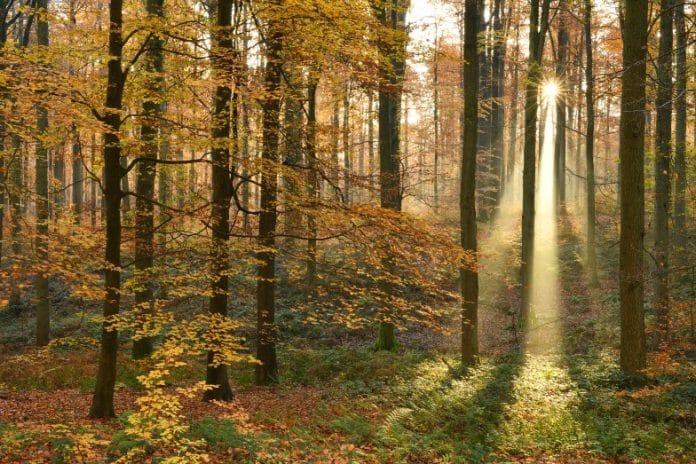The Sonian Forest in Belgium, which this year celebrates the fifth anniversary of its UNESCO-recognised nature reserves, is affected by climate change but nevertheless shows a great capacity for adaptation.
In 2017, five parts of the Sonian Forest received recognition as a UNESCO Word Heritage Site of “Ancient and Primeval Beech Forests of the Carpathians and Other Regions of Europe”. It is the only UNESCO Natural World Heritage site in Belgium.
UNESCO’s World Heritage Committee bestowed these primeval forests with this status as they are a living example of the exceptional evolution and impact of beech trees’ ecosystems in Europe since the end of the last Ice Age. Such forests are now extremely rare and have developed with very little human influence.
The protected areas of the Sonian forest form part of a group recognised by UNESCO which currently totals 94 primeval forests in 18 European countries, covering a protected area of 980 km2, which is nearly twice the size of Andorra.

In these reserves “there are hundreds of beeches that are more than 200 years old, with diameters between 80 and 160 cm,” says Caroline Celis, World Heritage Coordinator of the Sonian Forest in Belgium. “Moreover, with a height of up to 50 metres, they are among the largest beech trees in the world. We owe these majestic dimensions to the excellent growing conditions in the forest.”
Threats
Nevertheless, according to the World Heritage Outlook of the International Union for Conservation of Nature (IUCN), the prospects of these primeval forests are of “significant concern”. The biggest threats are logging, mostly in its surrounding buffer zones, as well as climate change.
The Sonian forest is itself not immune to the effects of climate change. Drier and hotter spring and summer seasons create weaker trees that might not grow as tall in the future. But, according to Ms. Celis, we should not be pessimistic: “Beech forests are experts at creating their own microclimate in which they can protect themselves from climate extremes.”
Biodiversity
Each of the 94 UNESCO beech forests has its own important species. Central and Eastern Europe are home to iconic species, such as the wolf, lynx or brown bear.

In the Sonian forest, many species are protected, including several bats, and also the northern crested newt.
“The biodiversity in the Sonian forest is very high. There are about 23 species of bats in Belgium, and 18 of those are found in the Sonian forest. That is a really impressive figure,” Ms. Celis explains.
According to Ms. Celis, we see a reverse trend in biodiversity in the Sonian forest. “In the rest of the world it’s dramatic, but the Sonian forest has become more diverse in recent decades. Following better forest management, we notice more dead wood and a biodiversity increase thanks to the recovery of the vegetation, the fungi and the organisms living on this type of wood.”
Power of cooperation
A joint management committee with representatives from the 18 countries that are home to the primeval forests meets twice a year.
“That European network is a great advantage,” Ms. Celis states. “Thanks to the exchange of scientific information and experience on the management and protection of these exceptional forests, we can better understand global warming and share information on sustainable forest management.”
“I very much believe in the power of collaboration; I get to work with people from all over Europe who are protecting these forests with great passion and commitment. That gives hope for the future,” Ms. Celis observes.
Future for primeval forests
Since the last Ice Age, the European beech has spread across almost the entire European continent: a unique success story, which will continue to grow. In Belgium as well as in other parts of the European forests, there are plans to extend the UNESCO Natural World Heritage sites.

“These ancient forests will help us in the future to cope better with climate change and biodiversity crises. It is in our interest to protect them. Recognition as UNESCO heritage means these forests have to be protected ‘forever’ and that can only help,” the Belgian heritage coordinator concludes.
More information
- Want to take care of the Sonian Forest? Discover the ‘good habits’ of the Sonian Forest.
- Ancient and Primeval Beech Forests of the Carpathians and Other Regions of Europe
- UN Decade on Ecosystem Restoration

